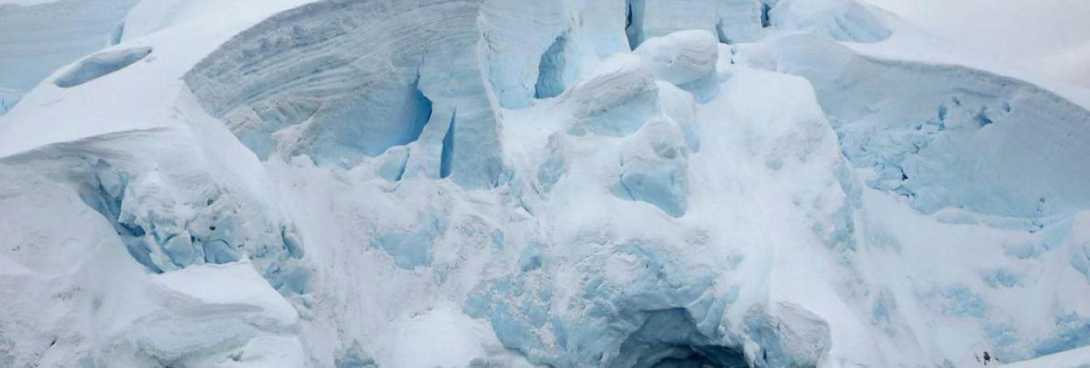
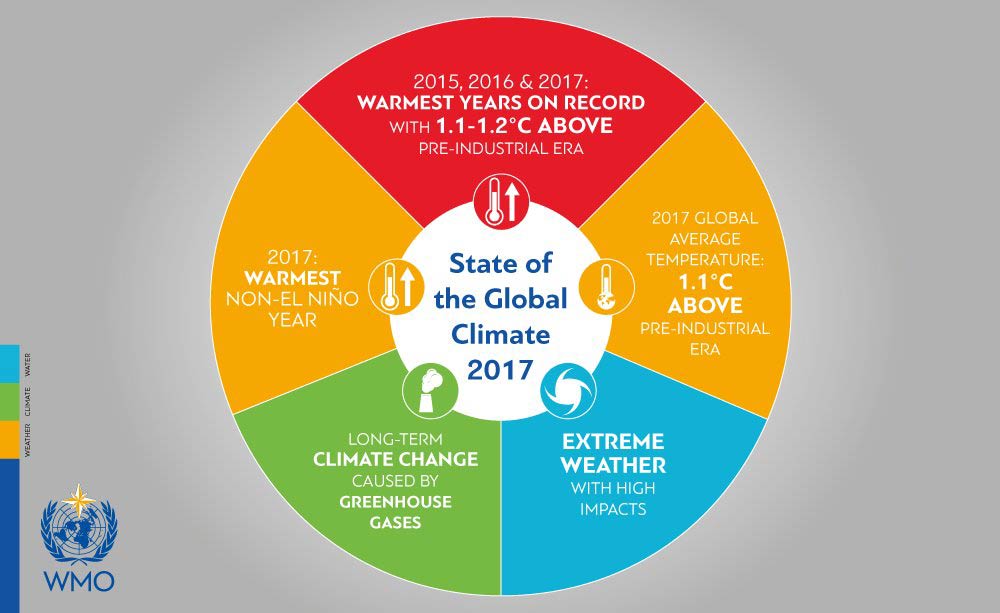
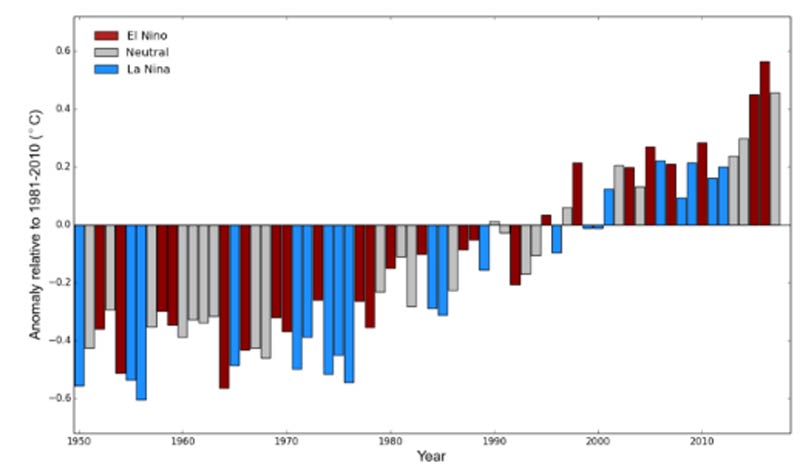



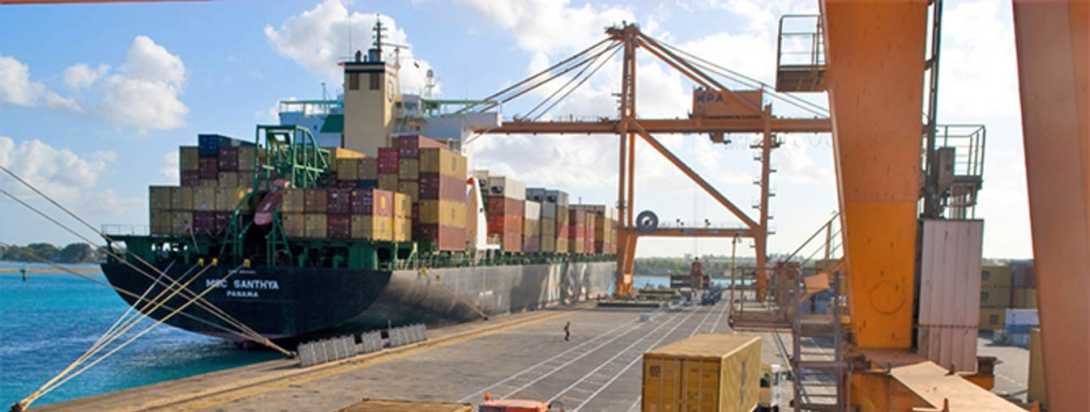
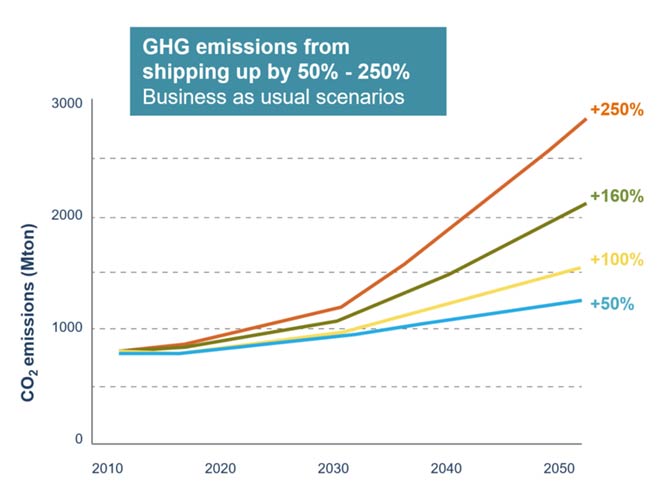
Source: World Bank Group
"If you're coming on set with me, you're not going to be eating swordfish or bluefin tuna. You will not be going to drink your coffee out of the toss-away cup. We try to put in practice what we preach and minimize our footprint. Every single time our crew got in the water to film something whether it was with seals, dolphins, or if it was a story about coral bleaching, we were taking plastic out of the ocean."
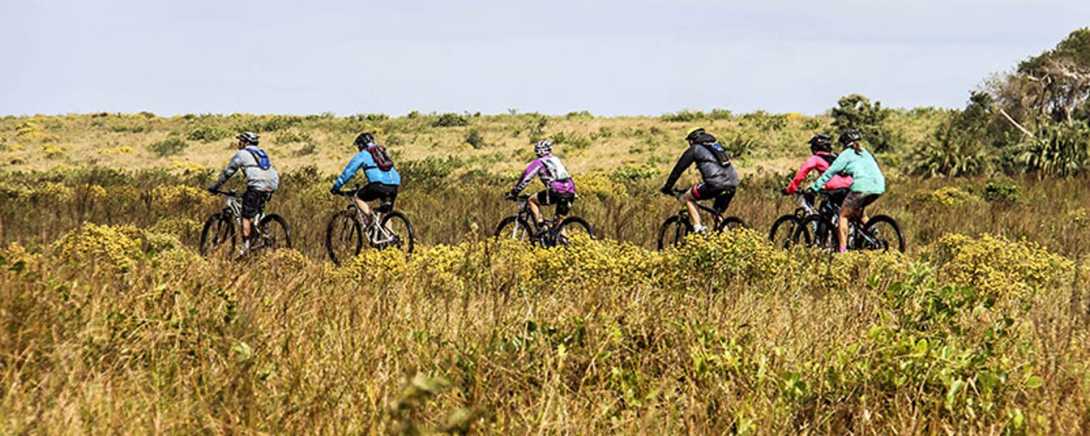
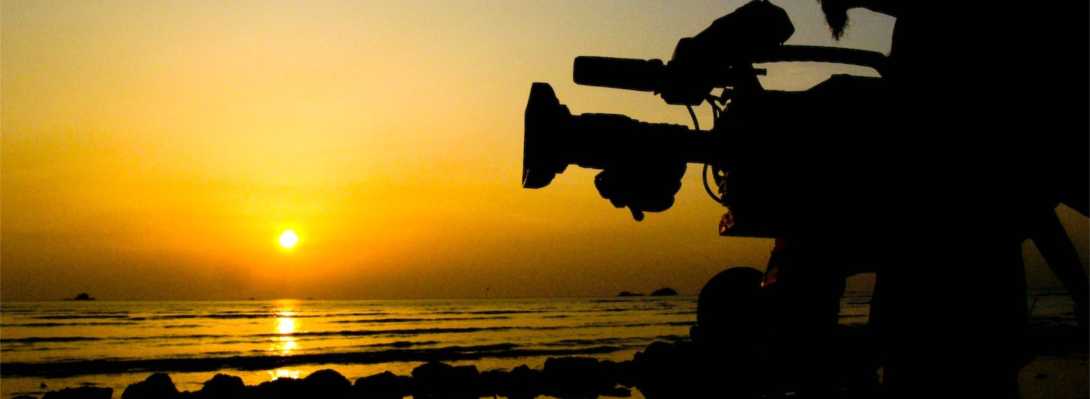
As the result of a journalism competition that concluded this week, ten journalists from the Pacific island region have been chosen to travel to and report from this year’s UN climate conference taking place in Bonn, Germany (COP23, 6 – 17 November).
The ten outstanding journalists from print, on-line and radio/TV will receive sponsored participation in the conference, media training at the prestigious DW Akademie and access to UN and other experts.
The Pacific island journalism competition reflects the important role the small island developing State of Fiji will be playing at the 23rd Conference of Parties to the UN Framework Convention on Climate Change - the official title of the conference.
Fiji will be presiding over COP23 and the Fijian Prime Minister, Frank Bainimarama, will undertake the key role of COP President on behalf of all countries attending.
The competition was generously funded by the German Government’s Ministry of Foreign Affairs.
Nick Nuttall, Director of Communications of the UNFCCC and Spokesperson for COP23, said:
“We are impressed by the high standard of the entries to the competition and would have liked to invite everyone who submitted their work under the competition, but that is unfortunately not possible. We’re now looking forward to welcoming the 10 winners in Bonn in November.
I would like to express my deep gratitude to the Germany’s Ministry of Foreign Affairs for financially supporting this competition, and to the Fijian COP23 Presidency for its advice and getting the message out about the competition in the Pacific region. The Presidency, the government of Germany and the UNFCCC were concerned that the costs of getting to and from Bonn would have been prohibitive for many journalists from that region.”
“We all acknowledged that it was vital to have media from that location here to report to their publics and witness the negotiations, the rich array of Global Climate Action events taking place and the cultural activities that surround such conferences,” he added.
The 10 participants were selected by a judging committee consisting of two members of the UNFCCC; two from the Ministry of Foreign Affairs communications branch; and two independent judges representing the Fijian COP23 Presidency. Their decision of the jury is final.
The jury selected six winners from print and online, two from radio and two from TV.
The winners are:
Print and Online
Ofani Eremae (Solomon Star, Solomon Islands)
Iliesa Tora (The Nuku’alofa Times, Tonga)
Lani Wendt Young (Samoa Planet, Samoa)
Jared Koli (The Island Sun, Solomon Islands)
Lice Movono (The Fiji Times, Fiji)
Anita Roberts (Vanuatu Daily Post, Vanuatu)
Radio
Mereoni Mili (Wansolwara – University of the South Pacific, Fiji)
Georgina Kekea (Solomon Islands Broadcasting Corporation, Solomon Islands)
TV
Elenoa Turagaiviu (FBC News, Fiji)
Florence Jonduo (EMTV, Papua New Guinea)
More information can be found on the relevant DW Akademie web page here.
Photo Credits: Flickr/birdyartworks
[video:https://vimeo.com/225451984]
Celebrating Climate Action and Sustainable Development Goals, Connect4Climate linked Ocean Week in New York to #All4TheGreen Week in Bologna.

“No ocean…no blue…no green…no life…no us”
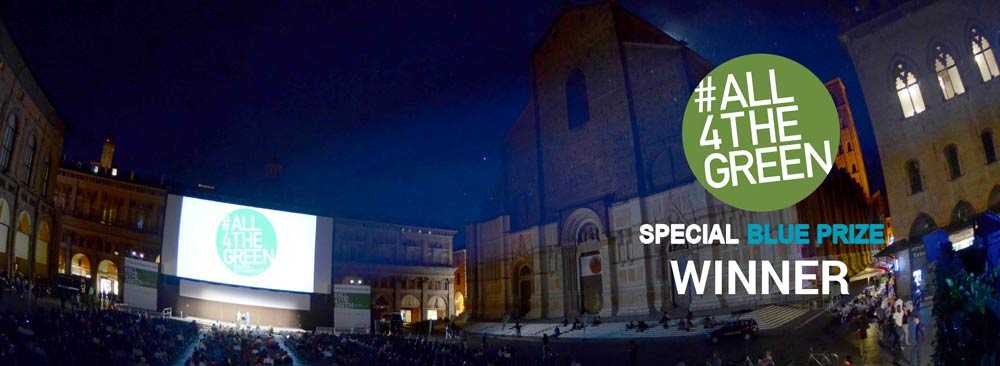
Connect4Climate and the High-Level Panel on Water are proud to announce that the winner of the #All4TheGreen Special Blue Prize is
<div>The UN Secretary-General Ban Ki-moon and World Bank Group President Jim Yong Kim convened a <strong>High-Level Panel on Water (HLPW)</strong> in January 2016. One of its objectives is to develop a set of shared principles to motivate and encourage governments, business, and civil society to consider water’s multiple values and to guide the transparent incorporation of these values into decision-making</div>
<div> </div>
<div>We need to accelerate a change in the way people use and manage water! The HLPW aims to provide the leadership required to champion a comprehensive, inclusive, and collaborative way of developing and managing water resources, and improving water and sanitation related services. The members of the panel are of Heads of State from Australia, Bangladesh, Hungary.</div>
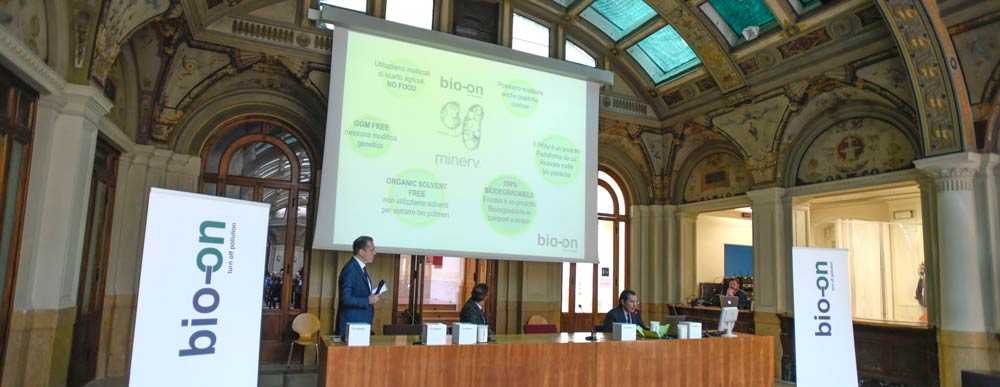
Bologna (Italy) 5 June 2017 – Some innovations bring truly revolutionary change to the planet and this is why Bio-on is proud to present its new technology, Minerv Biorecovery, which enables hydrocarbon sea pollution to be eliminated within approximately three weeks. "From today we offer the world and the market the technology to take effective, natural and ecological action in the event of environmental disasters such as oil spills into the sea," explains Marco Astorri, Chairman and CEO of Bio-on, which announces the success of its research conducted in collaboration with IAMC-CNR in Messina. "We have discovered," explains Astorri, "that the particles forming our PHAs bioplastic are the ideal environment for hosting and feeding the special microorganisms that eliminate oil from the sea." The World Bank Group will support Bio-on in raising awareness of the benefits of this technology for safeguarding the oceans as part of the Connect4Climate programme.
Marco Astorri, Chairman and CEO of Bio-on, shares more about the new technology Minerv Biorecovery in a Facebook Live session with Max Thabiso Edkins, Connect4Climate, at the SDG Media Zone in Bologna, Italy, as part of #AllTheGreen week of activities in the lead up to the G7 Environment.
Minerv Biorecovery is a technological solution made of micro powders, measuring just a few microns and of a particular shape, created out of Bio-on's revolutionary PHAs bioplastic that is natural and 100% biodegradable. The particles of these micro powders are thrown into polluted sea waters and form a porous structure housing a series of bacteria, naturally present in the marine environment, which feeds on the bioplastic, multiply and grow stronger until they attack the oil. The biodegradation processes activate within approximately 5 days and the degradable fraction of the hydrocarbons (e.g. oil) is eliminated in approximately 20 days.
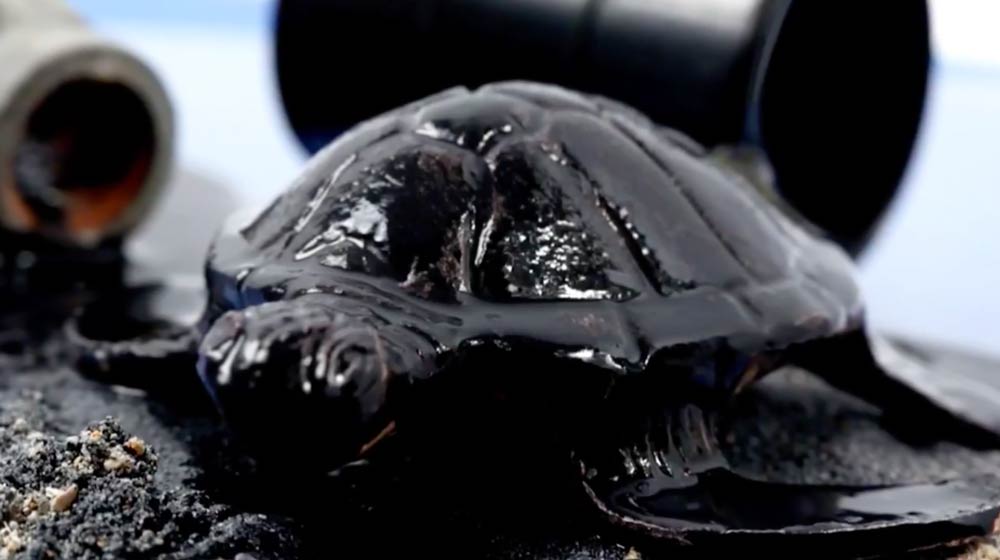
"It is nature looking after itself," explains Astorri, "because of our bioplastic, which is biobased, helps protect and feed these bacteria, thus accelerating their natural action." The micro powders in Minerv Biorecovery are 100% biodegradable and therefore do not release any residue into the sea unlike many solutions used to date in these cases. The biodegradation process for PHAs powder is sufficiently slow (1-2 months depending on conditions) to allow the bioremediating action of the microorganisms which, after having eliminated the pollutants, return to normal levels in the marine environment.
Tests on Minerv Biorecovery have been ongoing for several months at IAMC-CNR in Messina, which has tested, measured and validated the technology. Thanks to these studies, Bio-on is able to define an entirely new application in the oil-bioremediation field - a targeted activity that aims to “remediate” the negative impact on the environment of polluting molecules and products such as hydrocarbons, thanks to the metabolic degradation, and biodegradation, of microorganisms.
This activity is carried out by companies specializing in environmental remediation, Harbour Master's Offices, Navy, sea traders, etc.
"The principle of oil-bioremediation," explains Dr Simone Cappello, leading the Bioremediation project at IAMC in Messina, "is based on the existence of microorganisms, bacteria mainly, which are capable of attacking the molecular structure of many of the components in the naturally complex formulation of hydrocarbons. These microorganisms," explains Cappello, "are present in the marine environment but in metabolic, physiological conditions and not in sufficient quantities to enable a substantial reduction of the hydrocarbon spills. It is thanks to PHAs bioplastic that it is now possible to encourage and accelerate the otherwise prolonged transformation to CO2, the end product of biodegradation. Using PHAs bioplastic is also safe for the environment and marine life because it leaves no trace."
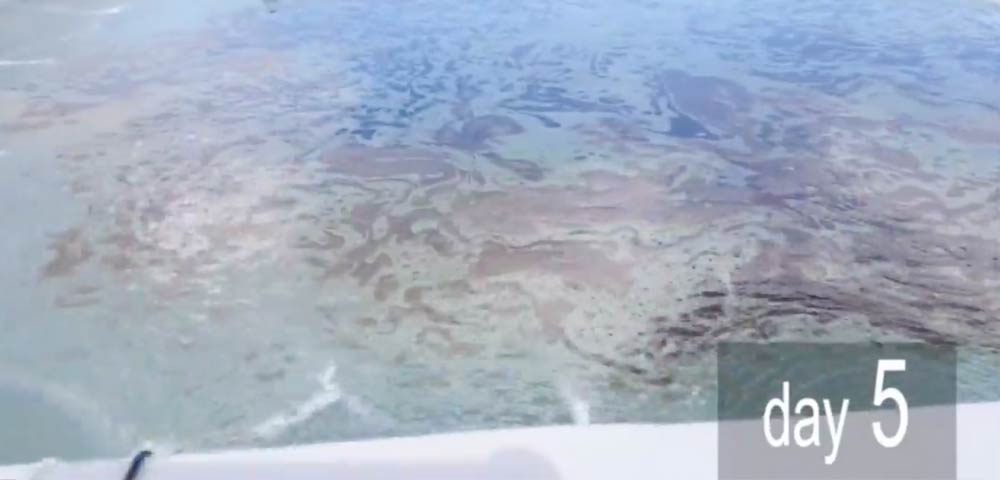
In the coming weeks, further tests will be conducted in the seas around the world: at ports and at industrial sites such as the refineries and cisterns at major oil companies. The application of this new technology will allow cleaning not only in the event of disasters but also in the everyday maintenance of ports or industrial sites.
"We are proud to announce this extraordinary discovery and contribute to protecting the marine environment," says Marco Astorri, Chairman and CEO of Bio-on, "We will license this technology, which is a further example of the many applications made possible by the PHAs bioplastic micro powders we will produce at the plant in Castel San Pietro Terme (Bologna) from 2018. We will continue to extend our direct presence even more in the bioremediation, cosmetics, biomedical and nanomedical sectors. Working with IAMC, a point of global excellence in marine research fills us with pride."
Minerv Biorecovery, like all the PHAs bioplastics (polyhydroxyalkanoates) developed by Bio-on is made from renewable plant sources with no competition with food supply chains. It is 100% eco-sustainable and naturally biodegradable at ambient temperature.
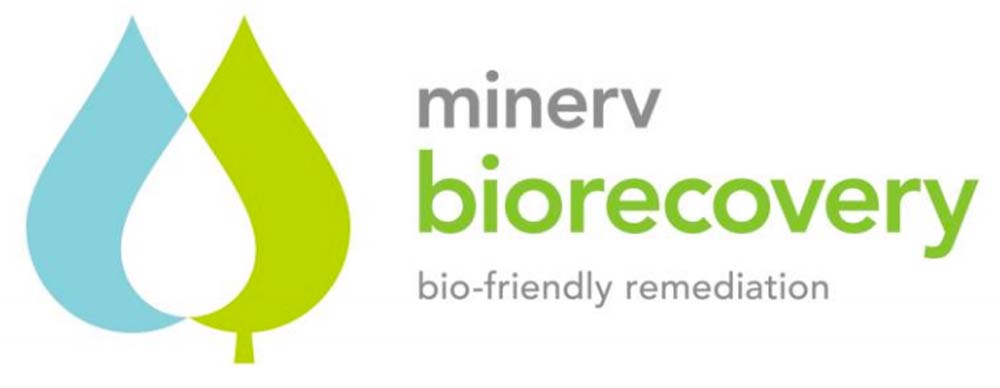
Bio-on will license the Minerv Biorecovery technology in the course of 2017. Marine pollution remediation products will be available from 2018
Press information: Angèlia S.r.l. Simona Vecchies; +393351245190; press@bio-on.it
Twitter: @BioOnBioplastic
Banner Photo Credits to Riccardo Savi/Connect4Climate